
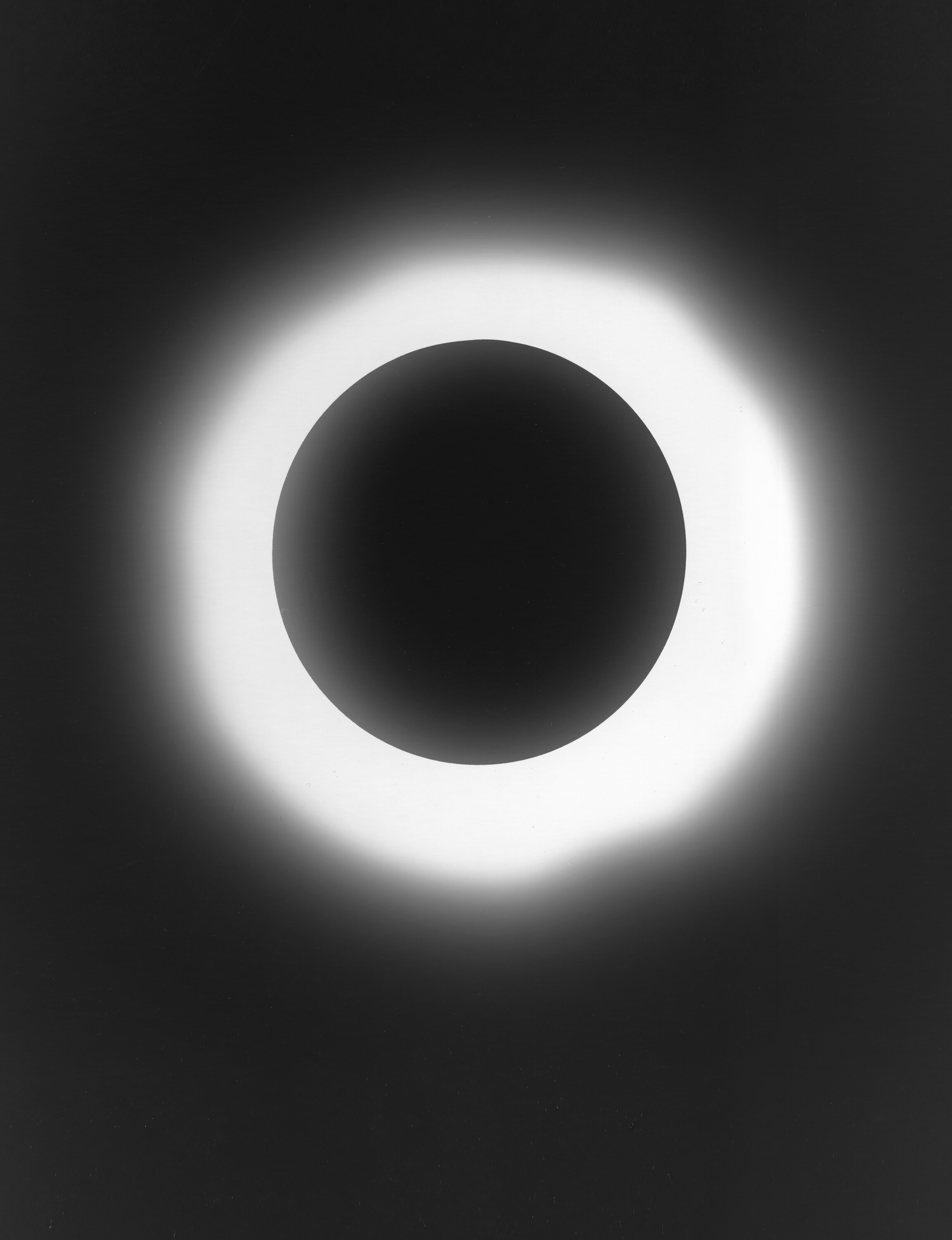
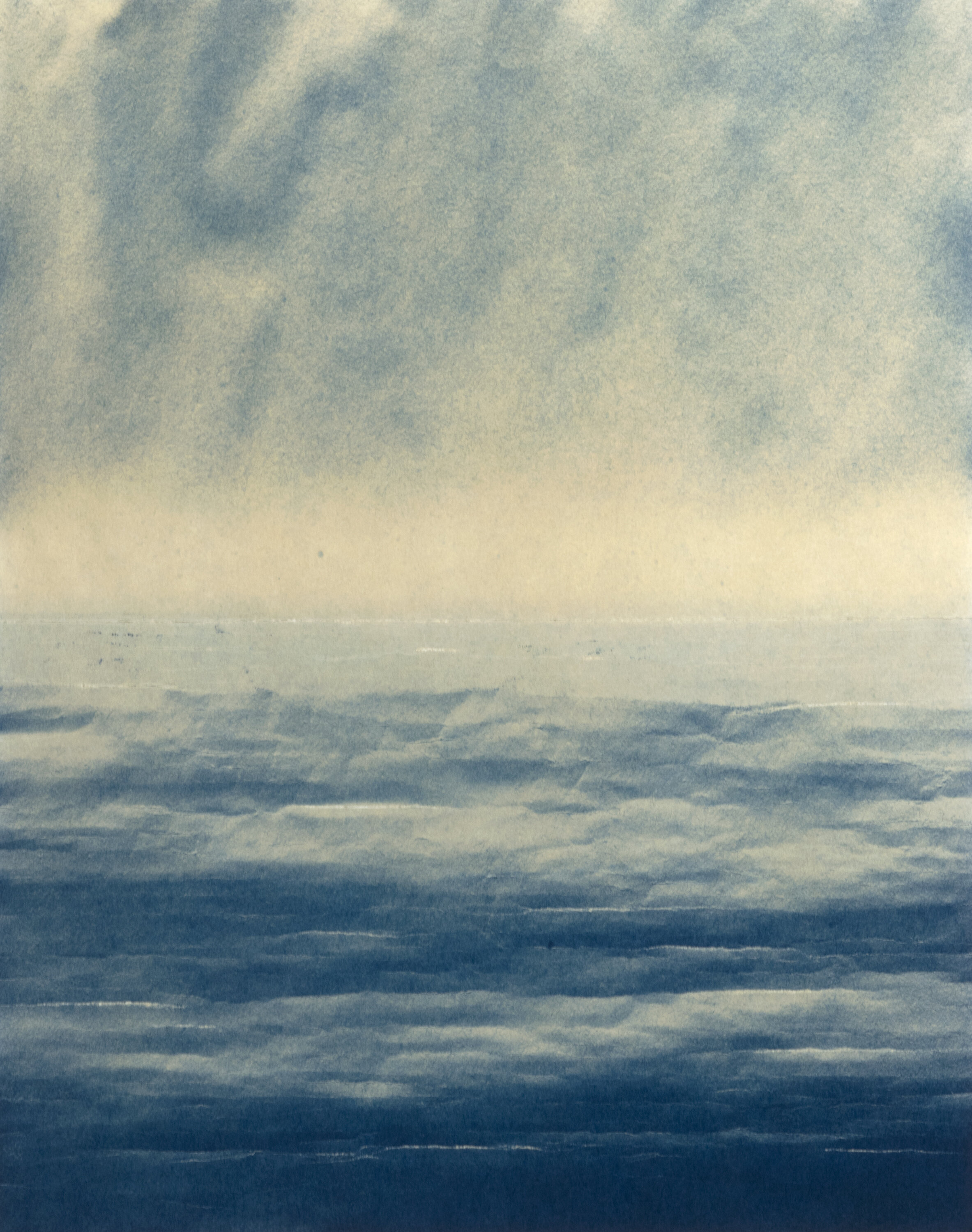
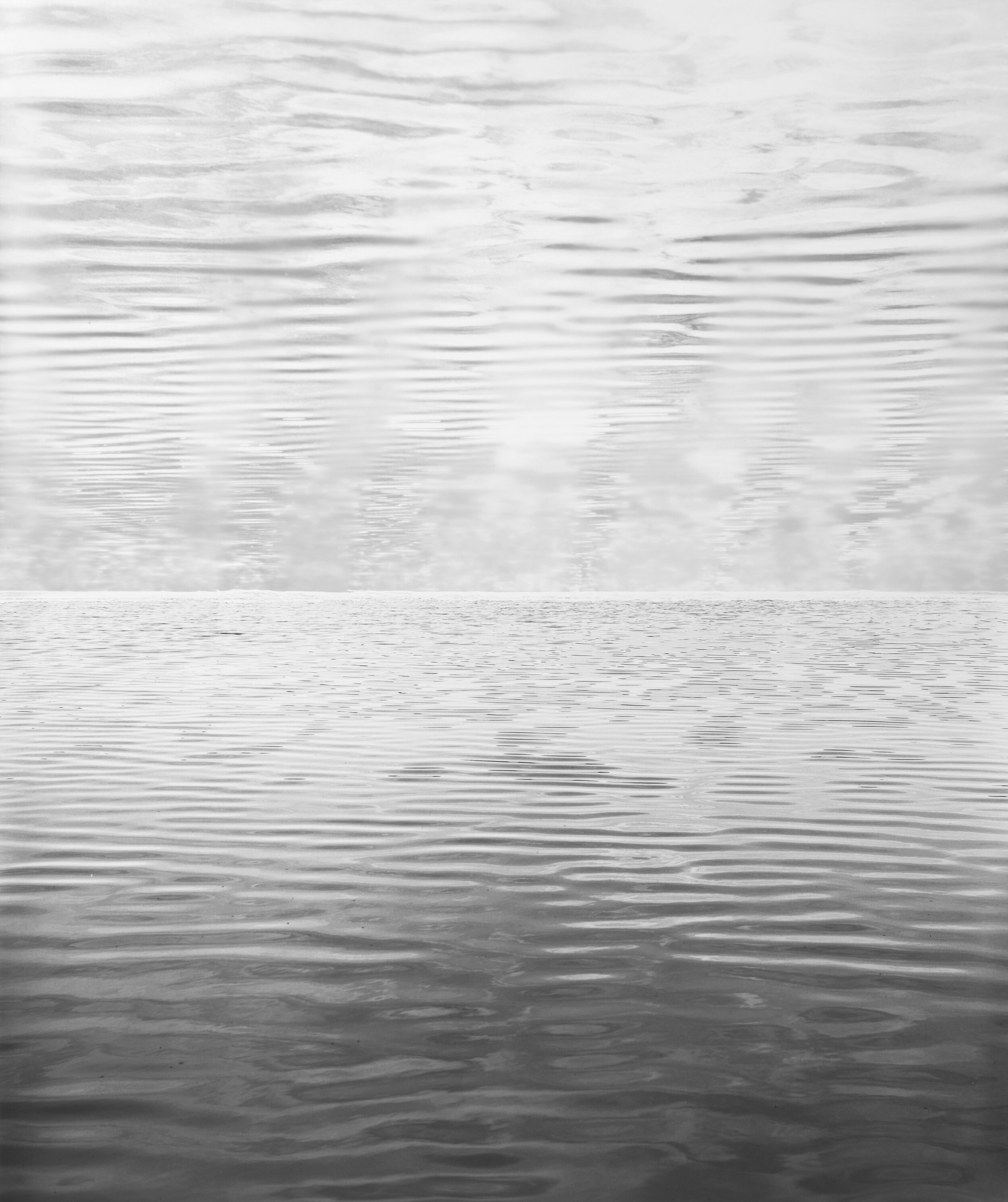
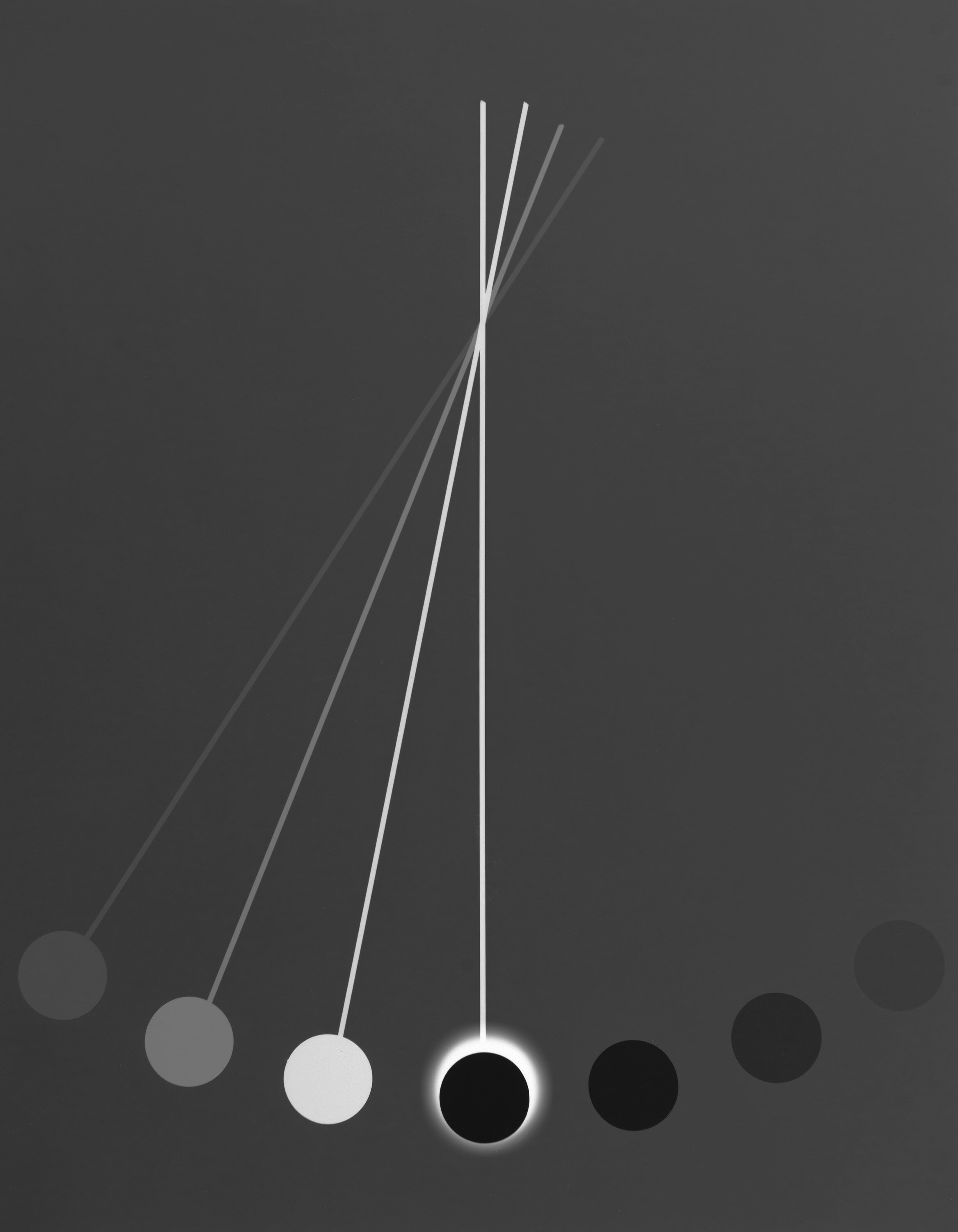

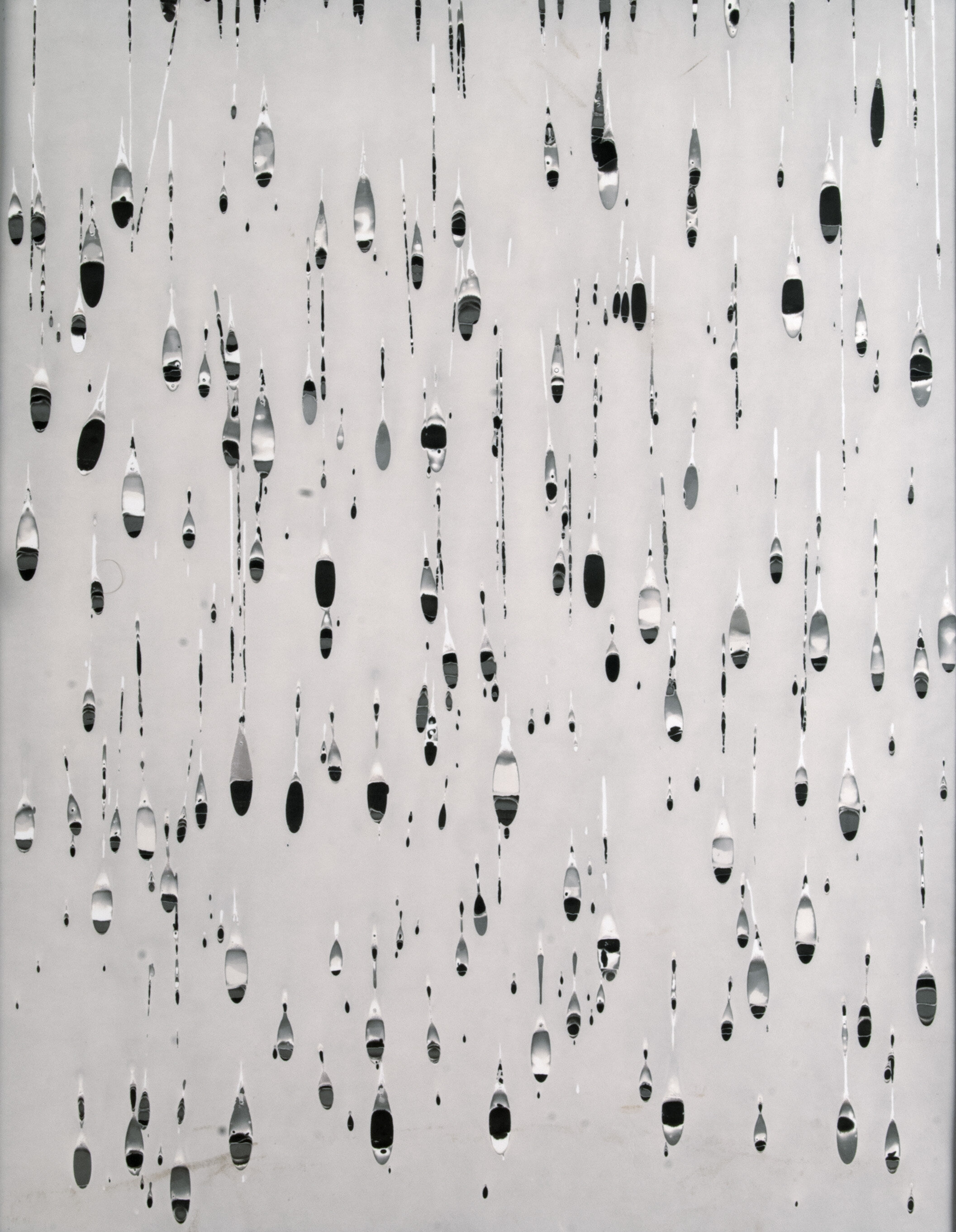
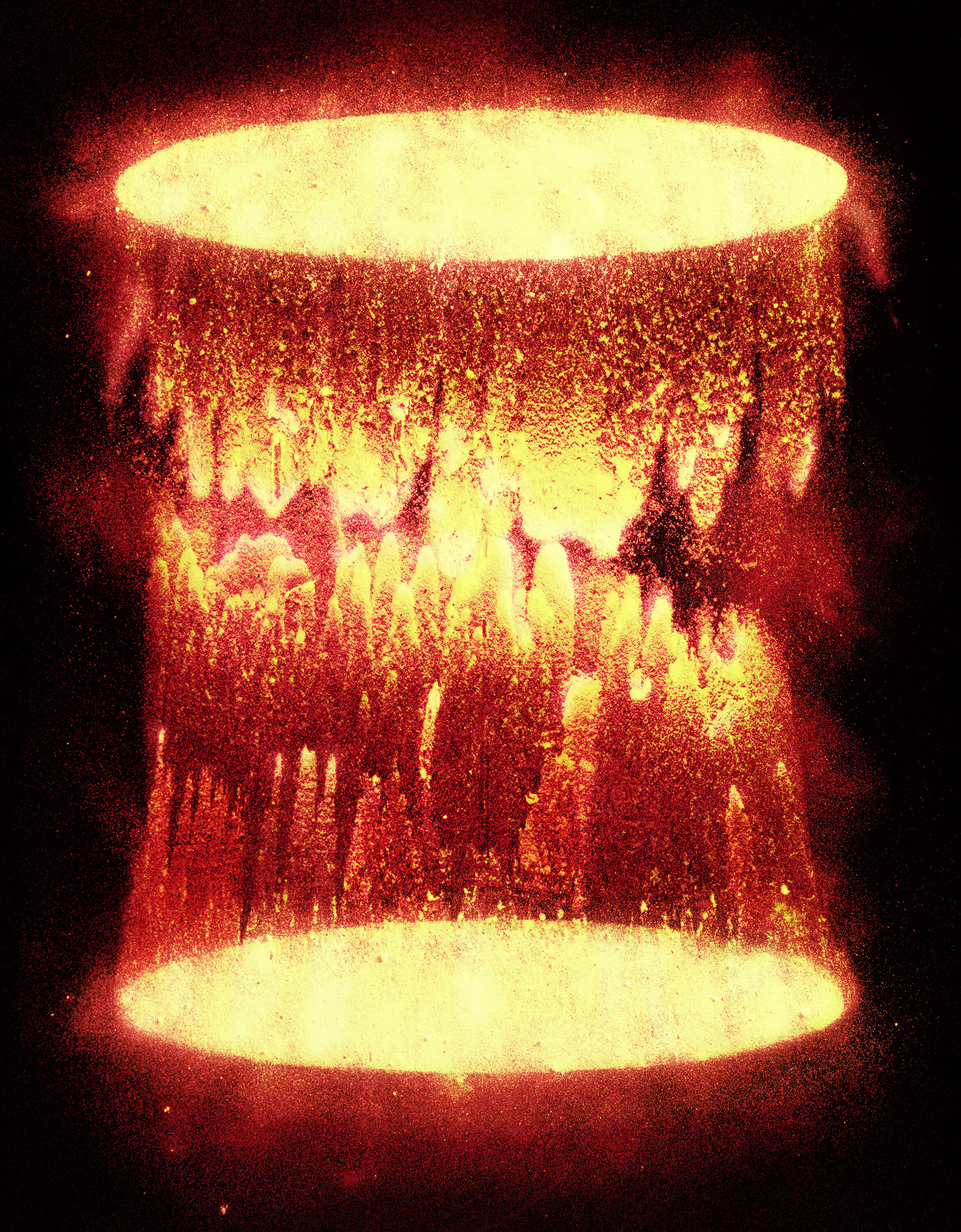

Caleb Charland
Under the Arc of the Sky
Caleb Charland’s new exhibit, Under the Arc of the Sky, combines science, photography, art, and a sophisticated curiosity creating images which are both magical and surreal — illusions that make us question what we are seeing. Visually striking, the resulting pieces reveal the artist’s exploration of light, motion, movement, gravity, the push and pull of Earth’s forces that are experienced every day.
Charland’s pieces are made without a camera. They are gelatin silver photographs made in the darkroom or cyanotype prints made in the light. Photograms, long exposures, paper negatives, glow in the dark powder are some of the techniques used, each demonstrating Charland’s inexhaustible sense of wonder and childlike exuberance for discovery. Using a lit candle as a pendulum (oscillating one meter ever second), it swings back and forth, dropping wax onto seven sheets of photo paper becoming a continuous photogram. Lying in the grass with his camera on his chest, lens open to the sky for more than two hours, Charland captures the movement of the earth making the stars appear to move. Charland’s creative scientific curiosity visually explores how the world works.
For me, wonder is a state of mind somewhere between knowledge and uncertainty. It is the basis of my practice and results in images that are simultaneously familiar yet strange. Each piece begins as a question of visual possibilities and develops in tandem with the natural laws of the world. Serendipitously, this process often yields unexpected results measurable only through photographic processes. The human presence and artifacts of the process provide a clue to the creation of the photograph while adding to the mysterious nature of the image. My hope is that this work affirms that even within the well-tested laws of science there are, and must always be, pathways to reinterpretation and discovery.
Charland earned a BFA in photography from the Massachusetts College of Art and Design in 2004, an MFA from the School of the Art Institute of Chicago as a Trustees Fellow in 2010. He was awarded a Pollock-Krasner Foundation Grant in 2016.
His work has been exhibited nationally and internationally and is in the collections
of The Philadelphia Museum of Art, The Progressive Collection,
and The Smithsonian American Art Museum.
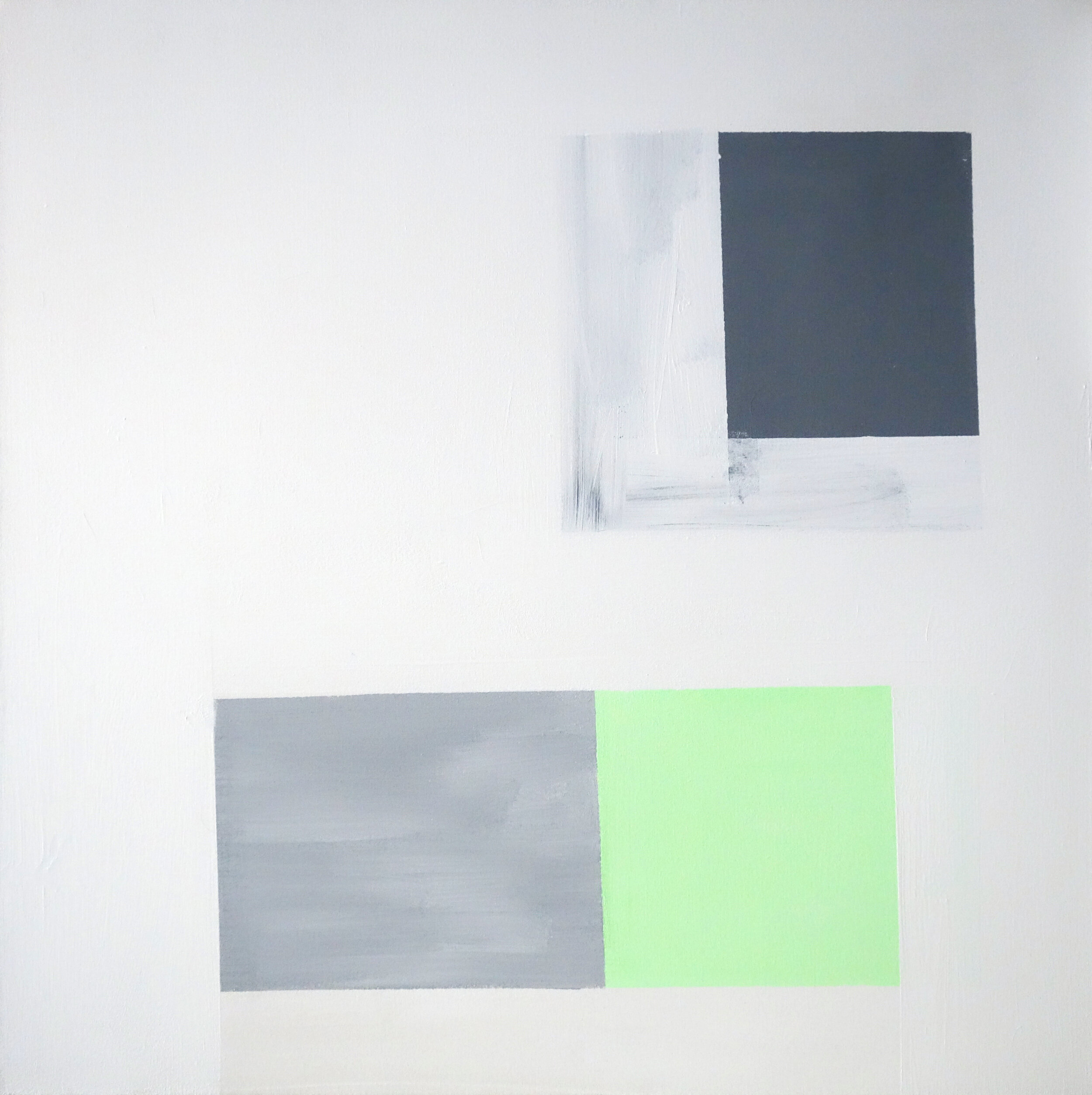
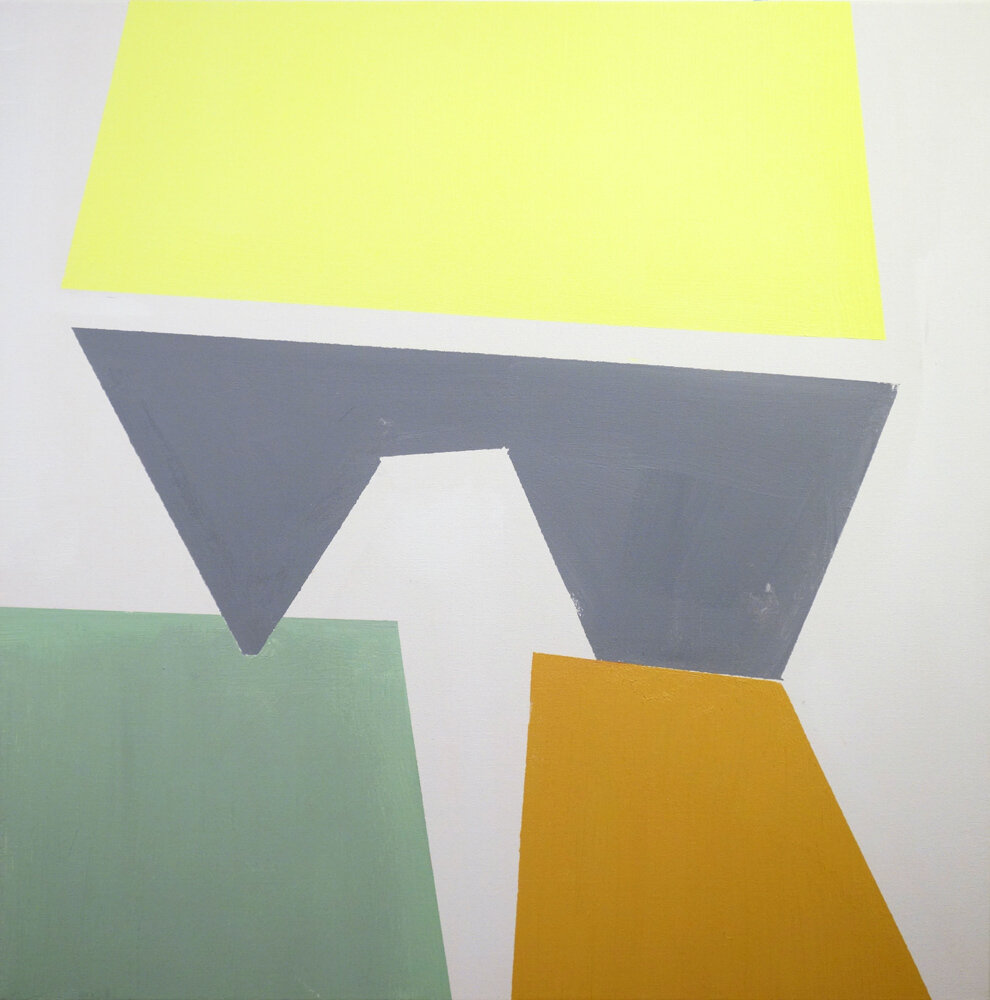
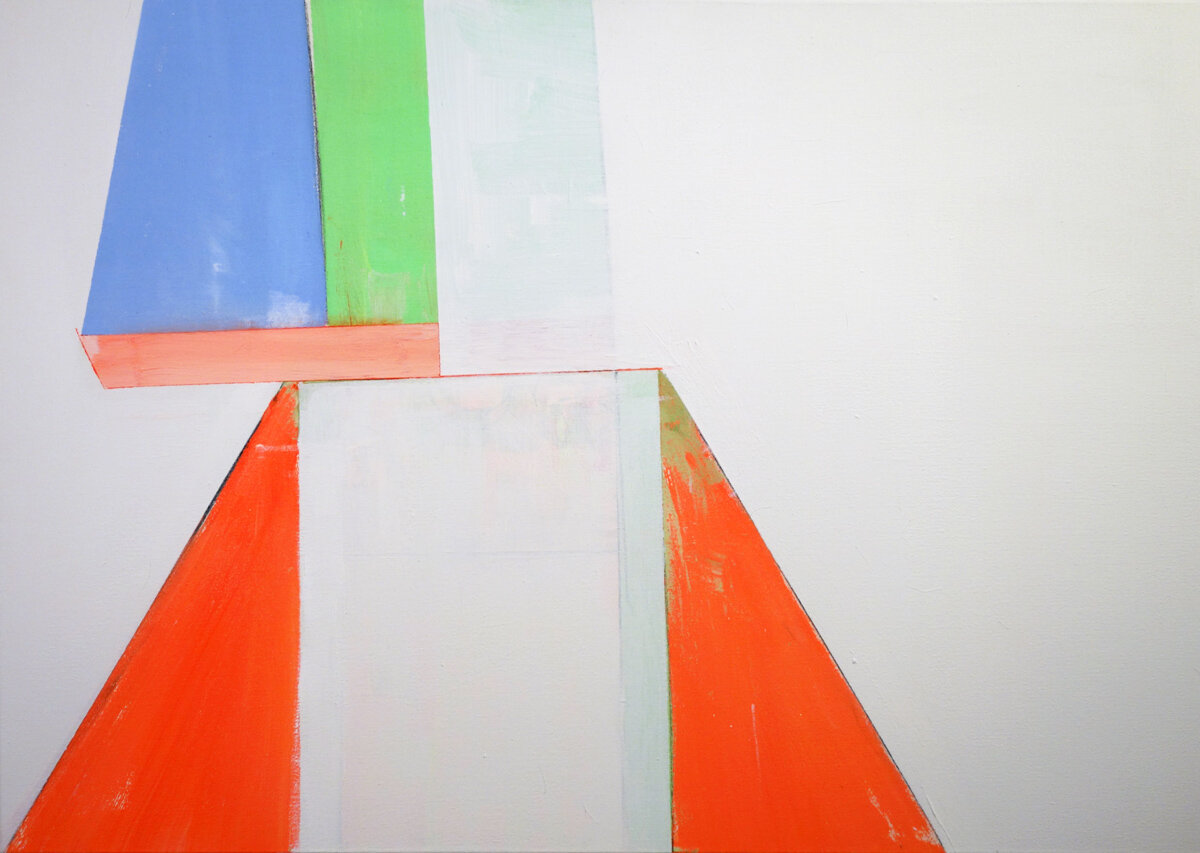
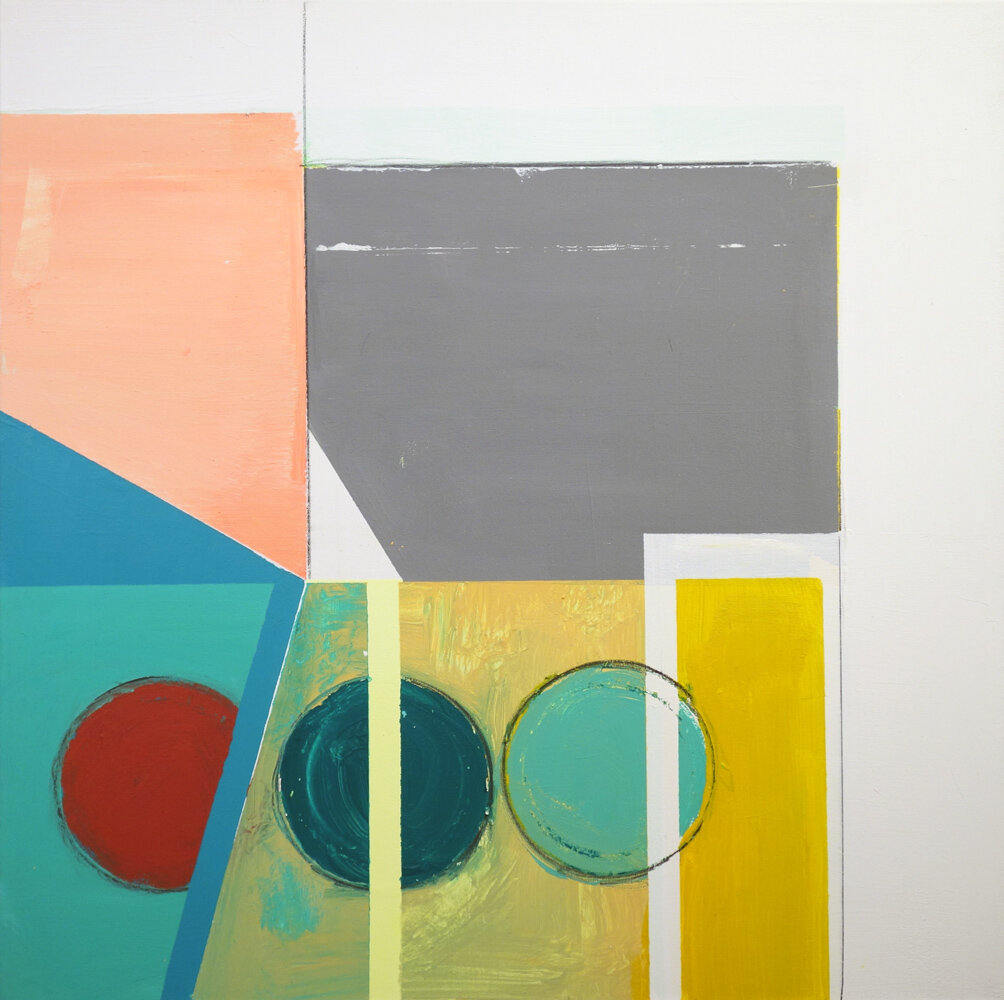
Robert Moeller
redacted: “no further information available...”
While many of these paintings may appear calm or resolved at first glance, a closer examination of their surfaces reveals a submerged history of initial thoughts and alternate propositions. Even in their final form, there are always subtle tensions: flat shapes suggest traces of misaligned three-dimensional volumes; unexpected colors slip out around their edges amidst deep currents of geometric composition. The work is influenced in part by the unruly (yes) lines that cross Mondrian’s painted grids, with echoes of grounded or negative space upon a suspended shape reverberating through layers of competing visual information. As with a redacted document, the entirety of the text is present in its original form, but it has been made (sometimes in part) unavailable. It resembles something you might have initially recognized yet now can’t fully understand. These paintings (Constructs) continually obfuscate the original intent or gesture made while building upon it until something new emerges, something that sits atop (or within) the armature of the first articulation of an idea and continues to recast it. What remains is the redacted version of a first impulse, obscured yet still asserting its primacy.
